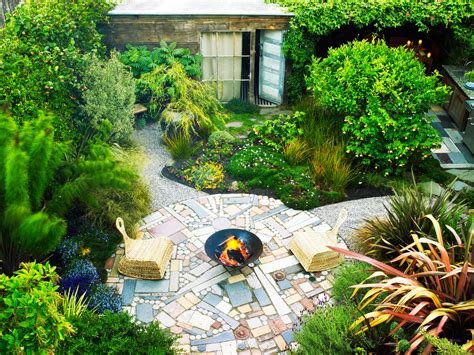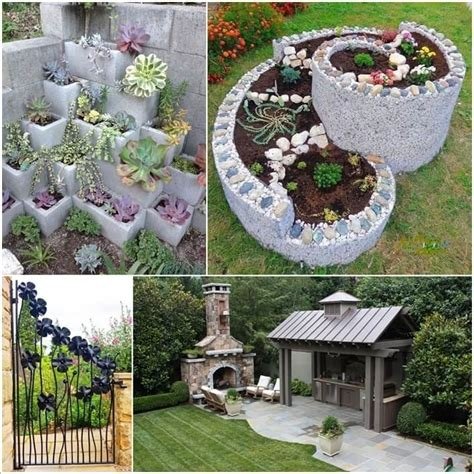Home Decor Trends: Incorporating Sustainable and Eco-Friendly Elements
In recent years, the trend of incorporating sustainable and eco-friendly elements into home decor has gained significant traction. As more people become environmentally conscious, there is a growing emphasis on making eco-friendly choices when it comes to decorating and furnishing our homes. In this blog post, we will explore various ways to incorporate sustainable and eco-friendly elements into your home decor, from choosing sustainable materials for furniture to integrating energy-efficient lighting solutions and creating indoor gardens with low-maintenance plants. We will discuss eco-friendly paint and wallpaper options, as well as eco-conscious window treatments for natural light. Additionally, we will delve into sustainable home accents, including decorative and practical items, and eco-friendly flooring choices for a healthy home. Whether you are looking to update your home decor or starting from scratch, this post will provide you with the inspiration and information you need to create a stylish and environmentally-friendly living space.
Choosing Sustainable Materials for Furniture
When it comes to furnishing your home, it’s important to consider sustainable materials that not only look great, but also have a positive impact on the environment. There are plenty of options available today that are both stylish and eco-friendly, so you can create a beautiful living space without contributing to deforestation or other environmental issues.
One popular sustainable material for furniture is reclaimed wood, which is sourced from old buildings, boats, and other structures. By using reclaimed wood, you’re giving new life to materials that might otherwise end up in a landfill, and you’re reducing the demand for virgin timber. Another option is furniture made from bamboo, which is a fast-growing plant that can be harvested without causing damage to the ecosystem. Bamboo is also incredibly strong and durable, making it a great choice for all types of furniture.
If you’re looking for upholstered pieces, consider furniture made with organic cotton or linen. These natural fibers are better for the environment than synthetic materials, and they’re often more comfortable too. Many companies also offer furniture with cushions filled with natural latex, which is a sustainable alternative to traditional foam.
By choosing sustainable materials for your furniture, you can create a home that not only looks beautiful, but also reflects your commitment to environmental responsibility. Whether you’re drawn to the warmth of reclaimed wood, the sleekness of bamboo, or the comfort of organic fabrics, there are plenty of options available to help you furnish your home in an eco-friendly way.
Eco-Friendly Paint and Wallpaper Options
When it comes to decorating your home, it’s important to consider the environmental impact of the materials you choose. This includes paint and wallpaper, which can contain harmful chemicals and contribute to indoor air pollution. Fortunately, there are now many eco-friendly options available that are not only better for the planet but also for the health of you and your family.
One of the key factors to look for when choosing eco-friendly paint is low or zero VOC (volatile organic compounds) content. VOCs are chemicals that can off-gas from paint and contribute to indoor air pollution. There are now many brands that offer low-VOC or VOC-free paint options, which are just as durable and vibrant as traditional paints.
When it comes to wallpaper, look for products that are made from sustainable materials such as recycled paper or natural fibers. Avoid vinyl wallpaper, as it is not biodegradable and can release harmful chemicals into the environment. There are also many companies that offer eco-friendly wallpaper options that are printed with water-based inks and are PVC-free.
By choosing eco-friendly paint and wallpaper options, you can reduce your impact on the environment and create a healthier indoor space for you and your family.
Integrating Energy-Efficient Lighting Solutions
When decorating your home, it is important to consider the environmental impact of your lighting choices. Energy-efficient lighting solutions are not only better for the planet, but they can also save you money on your electricity bills in the long run. By choosing LED light bulbs over traditional incandescent bulbs, you can reduce your energy consumption and minimize the need for frequent bulb replacements. LED bulbs also emit less heat, making them safer and more cost-effective in the long term.
Another great option for integrating energy-efficient lighting into your home is to install motion-sensor lights in outdoor spaces. These lights only activate when they detect movement, reducing energy waste when no one is around. They can also enhance the security of your property by automatically turning on when someone approaches, deterring potential intruders.
For indoor lighting, consider using smart lighting systems that can be easily controlled and programmed to adjust light levels throughout the day. By dimming or turning off lights when they are not needed, you can further reduce your energy consumption and contribute to a more sustainable home environment. Many smart lighting systems also offer the convenience of remote access, allowing you to adjust your lighting settings from anywhere using a smartphone or voice commands.
Integrating energy-efficient lighting solutions into your home is a simple yet impactful way to reduce your carbon footprint and create a more sustainable living space. By making smart choices and investing in eco-friendly lighting options, you can enjoy a well-lit and environmentally conscious home for years to come.
Creating Indoor Gardens with Low-Maintenance Plants
Indoor gardens can bring a sense of tranquility and beauty to any home, but for those with a busy lifestyle, it can be challenging to maintain them. Fortunately, there are numerous low-maintenance plants that can thrive in indoor environments with minimal care.
One great option for an indoor garden is the snake plant, also known as mother-in-law’s tongue, which requires very little water and can tolerate low light conditions. These sturdy plants can add a touch of greenery to any room without demanding too much attention.
Another low-maintenance plant that is perfect for indoor gardens is the pothos. With its trailing vines and vibrant green leaves, pothos can thrive in a variety of light conditions and only needs to be watered when the soil is dry. It is a versatile and resilient plant that can bring life to any indoor space.
For those looking for a pop of color in their indoor garden, succulents are an excellent choice. These drought-tolerant plants come in a wide range of shapes and sizes and can survive in arid conditions, making them perfect for busy individuals who may forget to water their plants from time to time.
Eco-conscious Window Treatments for Natural Light
When it comes to creating an eco-friendly home, one of the essential elements to consider is window treatments. By choosing sustainable window treatments, you can not only reduce your environmental impact but also enhance the natural light in your space.
One of the most popular options for eco-conscious window treatments is bamboo shades. Bamboo is a sustainable material that grows quickly and can be harvested without causing harm to the environment. Bamboo shades are not only stylish but also provide a warm, natural look to your windows.
Another eco-friendly option for window treatments is organic cotton curtains. Organic cotton is grown without the use of pesticides or synthetic fertilizers, making it a much more sustainable choice compared to conventional cotton. Organic cotton curtains are not only better for the environment but also healthier for you and your family.
For those looking for a high-tech solution, solar shades are an excellent choice for eco-conscious window treatments. Solar shades are designed to block UV rays and reduce glare while still allowing natural light to filter through. They can help regulate the temperature in your home, reducing the need for artificial cooling and lighting.
Eco-friendly Flooring Choices for a Healthy Home
When it comes to creating a healthy home environment, the choice of flooring material is key. Many traditional flooring options such as vinyl, carpet, and laminate contain harmful chemicals and toxins that can off-gas into the air, affecting indoor air quality. Therefore, it’s important to opt for eco-friendly flooring options that are not only better for the environment but also for the health of your family.
One popular choice for eco-friendly flooring is bamboo. Bamboo is a highly sustainable material as it grows rapidly and can be harvested without causing damage to the environment. It is also durable and easy to maintain, making it a great option for eco-conscious homeowners. Another great option is cork flooring, which is derived from the bark of cork oak trees. This material is not only renewable but also provides a comfortable and resilient surface for walking.
If you’re looking for a more natural look, hardwood flooring made from reclaimed or sustainably sourced wood is an excellent choice. Not only does it add a touch of warmth and character to your home, but it also helps reduce the demand for new wood, therefore conserving natural resources. Additionally, linoleum flooring made from natural materials such as linseed oil, wood flour, and cork dust is biodegradable and has anti-microbial properties, making it a healthy and sustainable option for your home.
With these eco-friendly flooring choices, you can create a healthy home environment while also contributing to the preservation of the environment. Making the switch to sustainable flooring options is a small but significant step towards a greener and healthier lifestyle.
Sustainable Home Accents: Decorative and Practical
When it comes to styling your home with accents, it’s important to consider not only the aesthetic appeal but also the environmental impact. Choosing sustainable home accents that are both decorative and practical can help reduce your carbon footprint and contribute to a healthier planet.
One option for sustainable home accents is to look for pieces made from reclaimed or repurposed materials. This could include furniture made from reclaimed wood, or decorative items made from recycled glass or metal. Not only does this give new life to materials that might otherwise go to waste, but it also adds a unique and eclectic touch to your home decor.
Another way to incorporate sustainable accents into your home is by choosing handmade or artisanal pieces. Supporting local artisans and craftsmen not only reduces the carbon footprint associated with shipping and transportation but also helps to preserve traditional craftsmanship and support local economies. Look for handwoven textiles, pottery, or metalwork to add a personal and sustainable touch to your home.
Lastly, consider choosing multi-functional home accents that serve both a decorative and practical purpose. For example, a decorative basket can also serve as storage for blankets or magazines, and a stylish eco-friendly rug can add both warmth and texture to a room while also reducing noise and providing insulation.
Frequently Asked Questions
What are some sustainable materials for furniture?
Some sustainable materials for furniture include bamboo, reclaimed wood, and recycled metal.
What are some eco-friendly paint and wallpaper options?
Some eco-friendly paint options are low-VOC or zero-VOC paints, while eco-friendly wallpaper options can include those made from recycled materials or sustainably sourced paper.
How can I integrate energy-efficient lighting solutions into my home decor?
You can integrate energy-efficient lighting solutions by using LED or CFL light bulbs, installing dimmer switches, and incorporating natural light through well-placed windows and skylights.
What are some low-maintenance plants for indoor gardens?
Some low-maintenance plants for indoor gardens include snake plants, pothos, succulents, and peace lilies.
What are some eco-conscious window treatment options for natural light?
Some eco-conscious window treatment options for natural light include bamboo shades, sheer organic cotton curtains, and adjustable blinds.
What are some eco-friendly flooring choices for a healthy home?
Some eco-friendly flooring choices include bamboo, cork, reclaimed wood, and linoleum.
What are some sustainable home accents for a decorative and practical touch?
Some sustainable home accents include upcycled decor, handcrafted items from local artisans, and functional pieces made from recycled materials.






